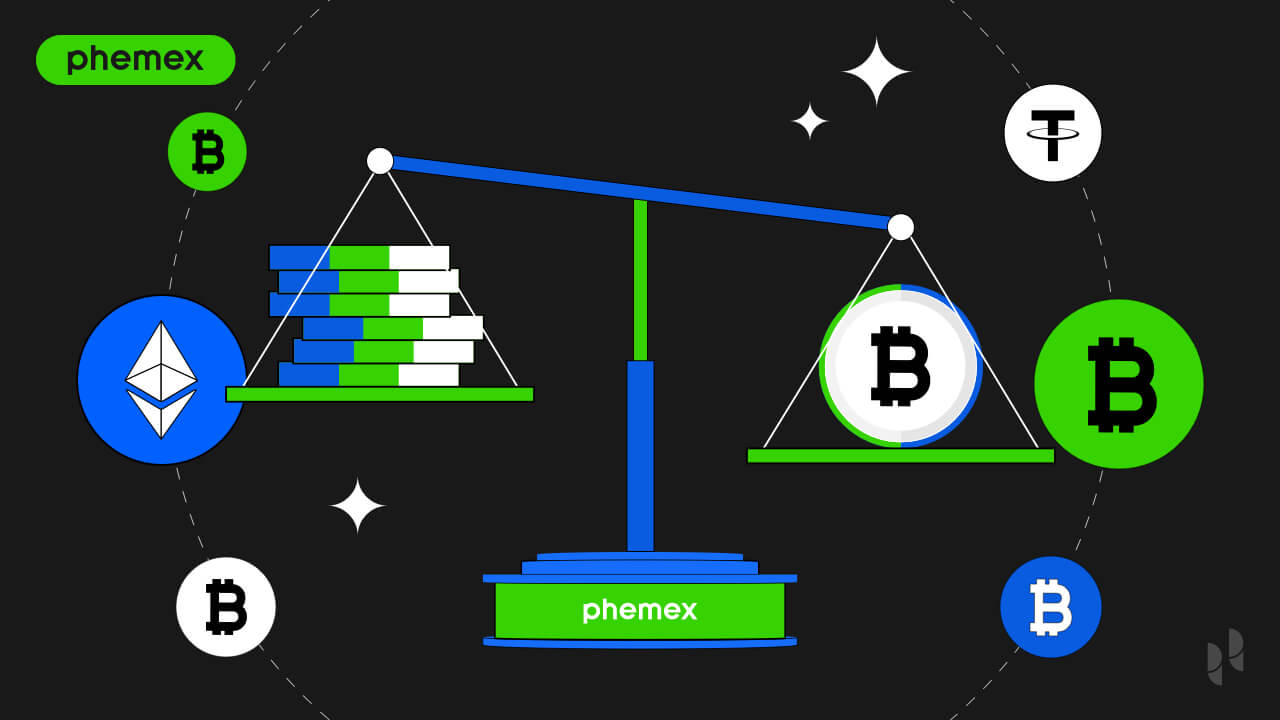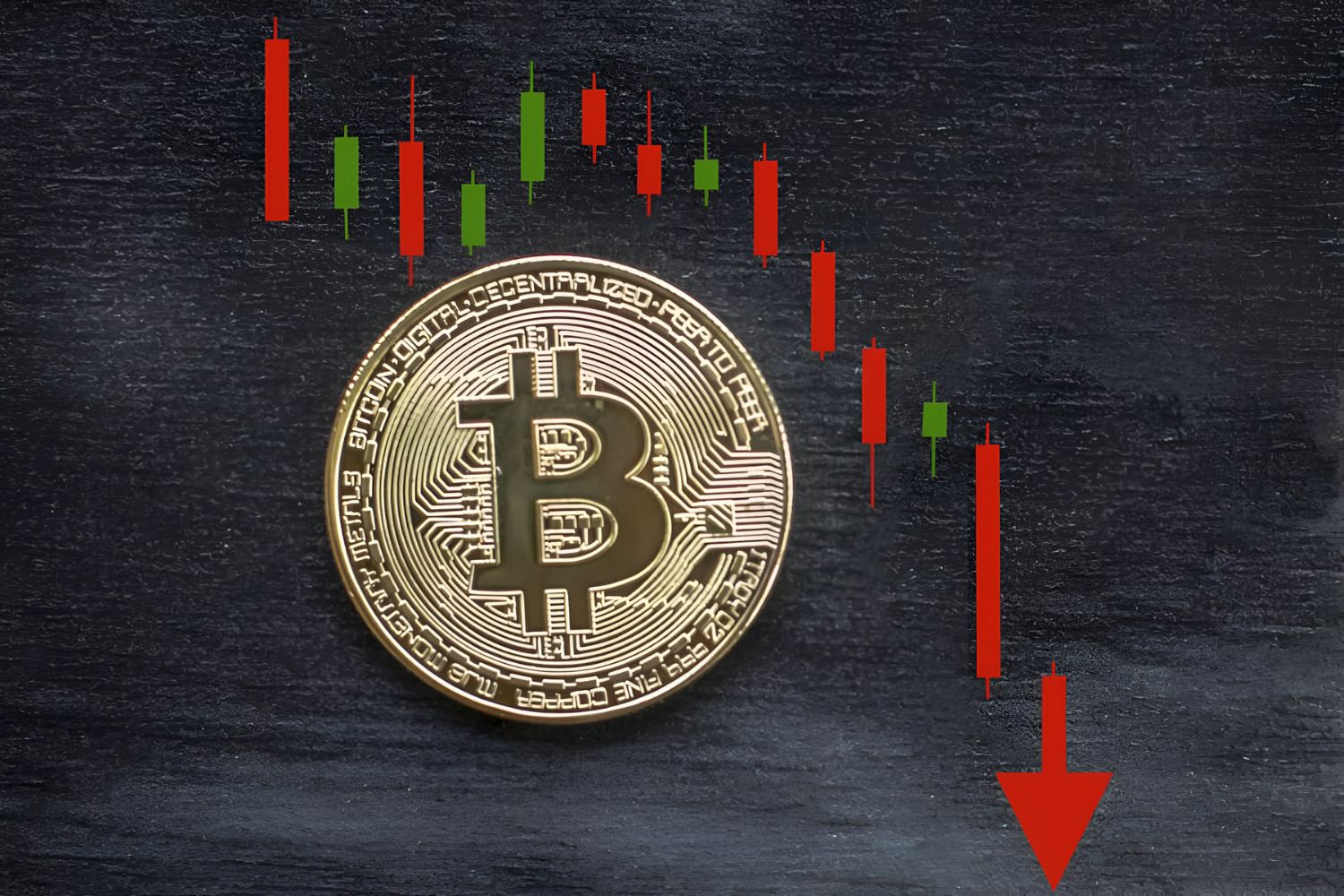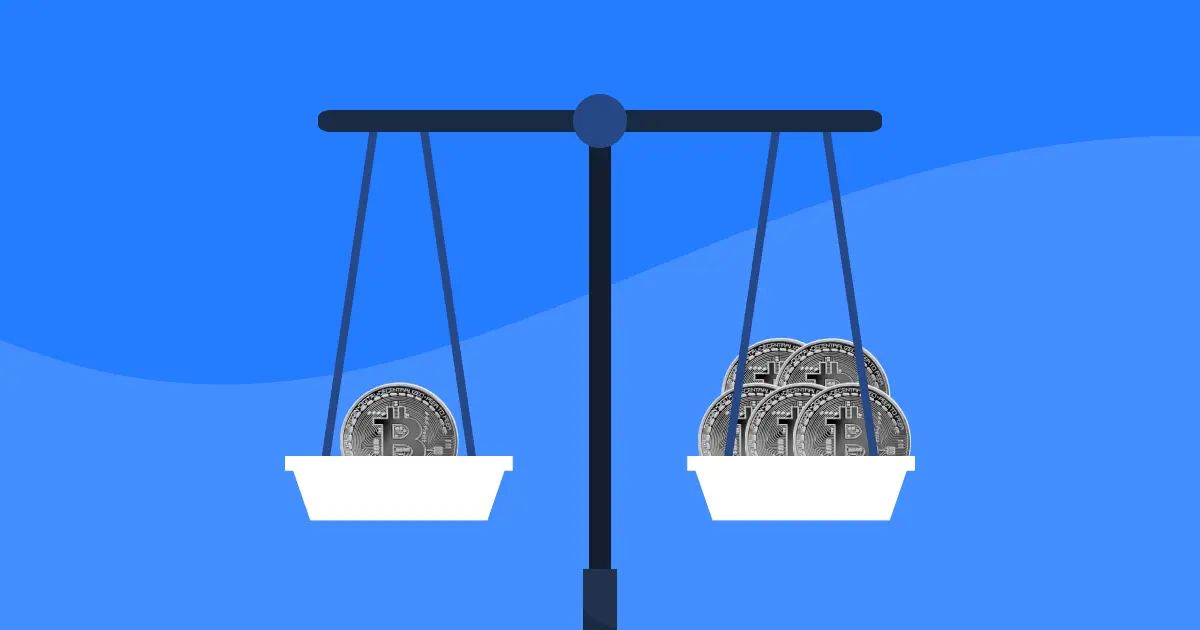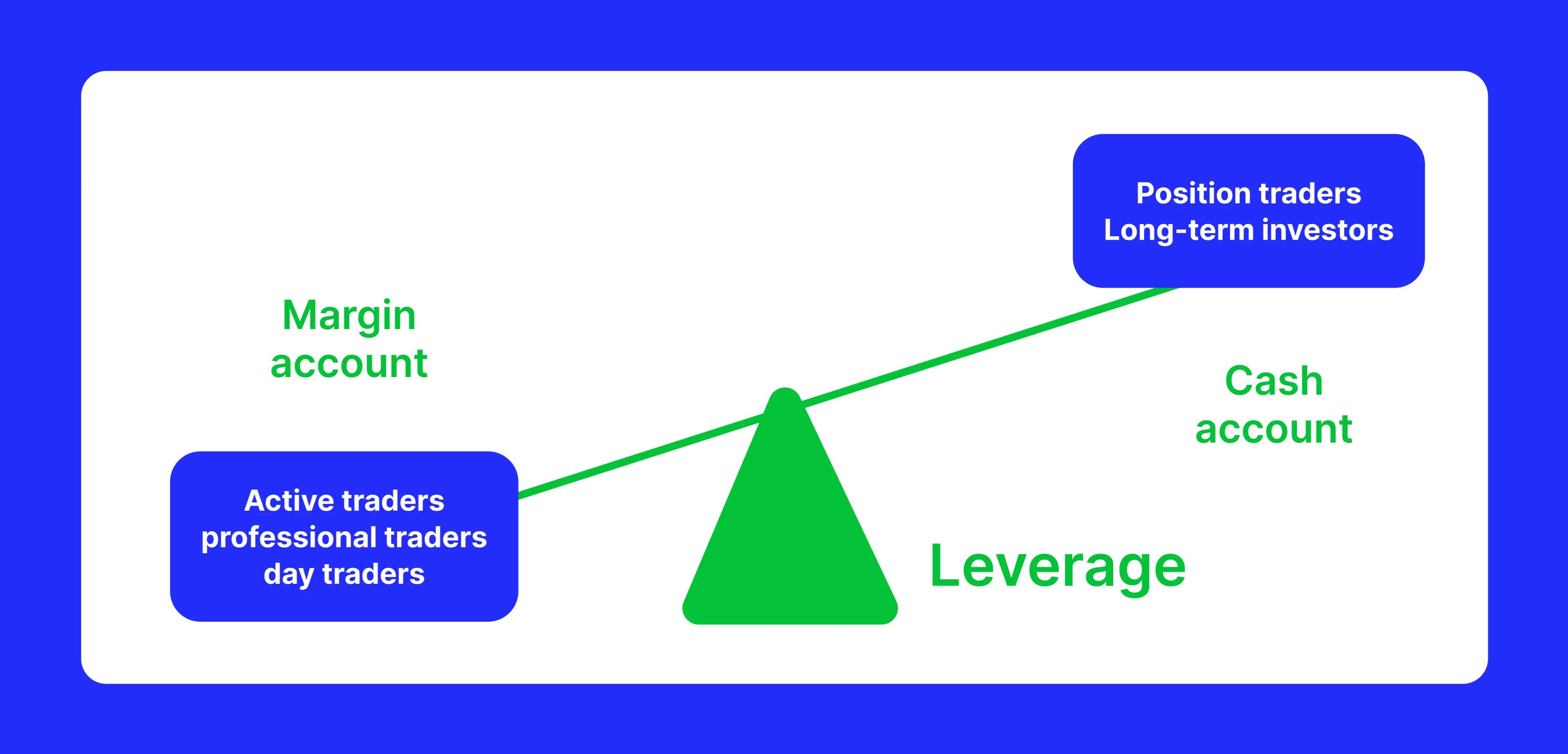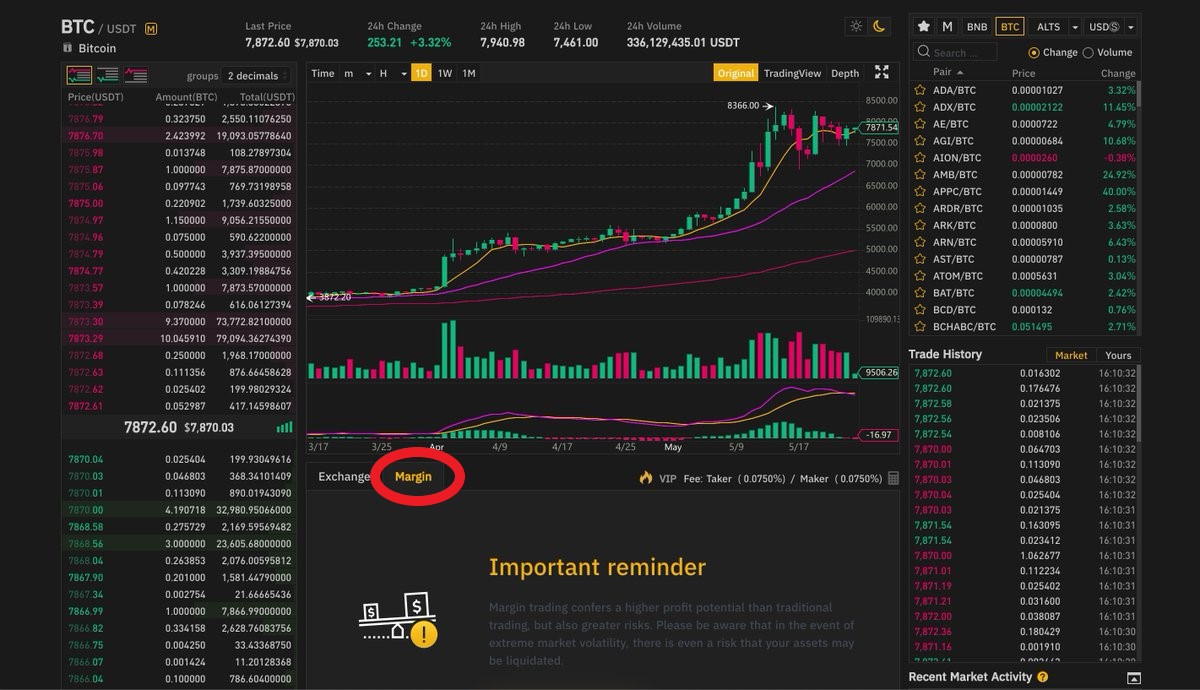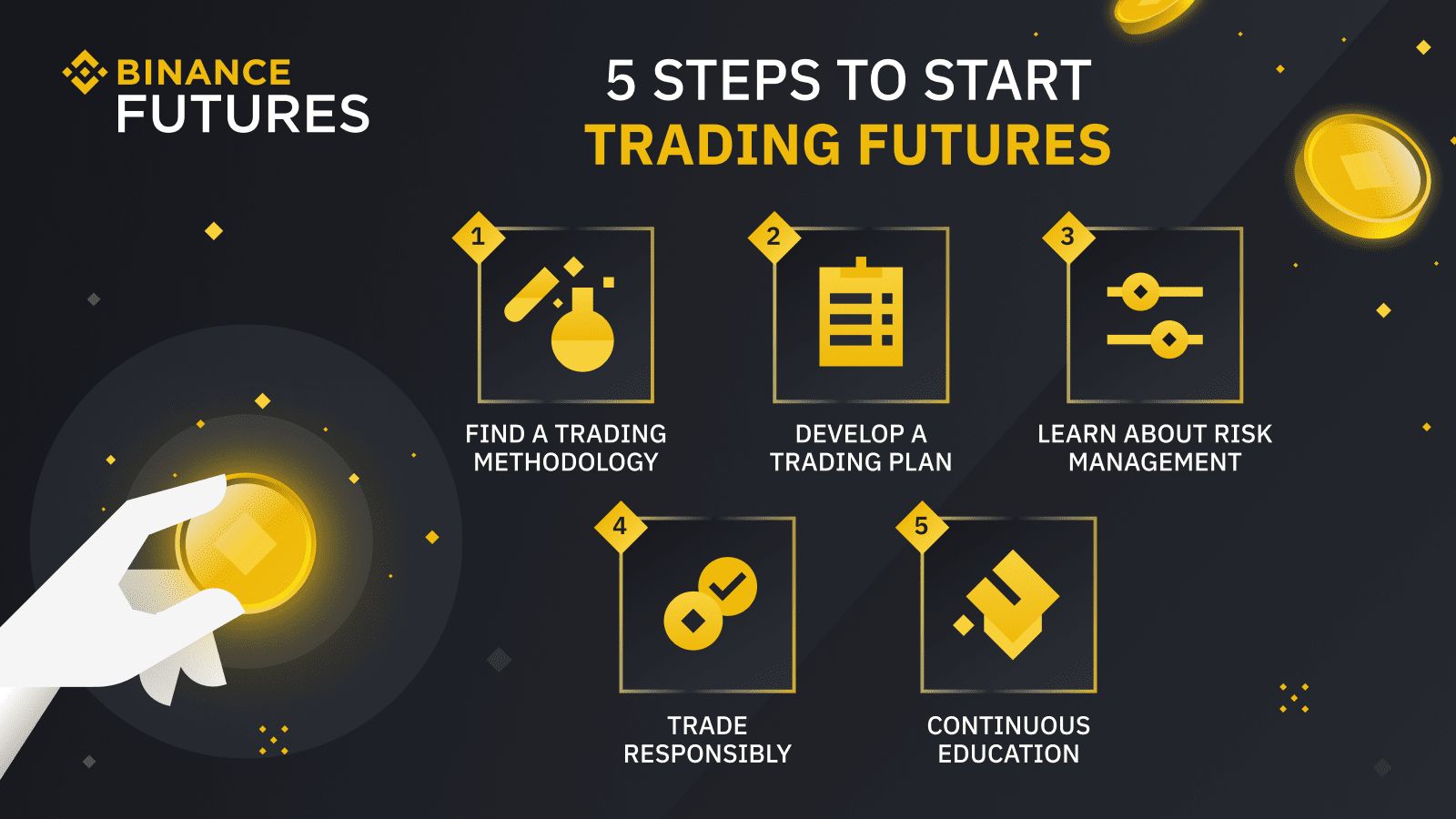Introduction
Welcome to the world of margin trading, where investors have the opportunity to amplify their potential returns by borrowing funds to trade financial assets. In this article, we will dive into the world of margin trading, exploring what it is, how it works, and the pros and cons of engaging in this high-risk investment strategy.
Margin trading is a popular practice in the financial markets, allowing traders to take advantage of leverage to increase their buying power. It provides an avenue for traders to trade assets that they might not have been able to afford otherwise. However, it’s important to note that margin trading can be a double-edged sword, as it can potentially magnify both gains and losses.
While margin trading can be enticing due to the potential for higher profits, it is crucial to approach it with caution and fully understand the risks involved. This article will equip you with the necessary knowledge to make informed decisions about whether margin trading is suitable for you.
Throughout this guide, we will discuss the mechanics of margin trading, exploring how it works and the potential benefits and drawbacks. We will also highlight some popular margin trading strategies and platforms that you can consider if you decide to venture into this realm of trading.
It’s important to emphasize that margin trading is not suitable for everyone. It requires a deep understanding of the financial markets, a high-risk tolerance, and strict risk management practices. Therefore, if you are new to investing or have a low-risk tolerance, it may be wise to focus on less speculative investment strategies.
Now, let’s delve into the world of margin trading, demystify its complexities, and equip you with the knowledge you need to navigate this exciting but challenging investment strategy.
What is Margin Trading
Margin trading is a trading strategy that involves borrowing funds from a broker or exchange to buy and sell financial assets. Unlike traditional trading, where investors use only their own funds, margin trading allows traders to leverage their positions and potentially enhance their profits.
When you engage in margin trading, you are essentially using borrowed funds to increase your trading capital. This additional capital allows you to take larger positions in the market and potentially generate higher returns. However, it is important to note that margin trading also increases the risk of losses.
The process of margin trading involves opening a margin account with a brokerage firm or cryptocurrency exchange that offers margin trading services. Once your margin account is set up, you can borrow funds, commonly known as “margin,” based on the account’s collateral value.
The collateral can be in the form of cash, stocks, cryptocurrencies, or other eligible securities. The value of the collateral determines the maximum amount of funds that can be borrowed for trading. The higher the value of the collateral, the more significant the borrowing capacity.
Margin trading also involves a concept known as the “margin requirement” or “margin ratio.” The margin requirement is the minimum percentage of the total trade value that you must have in your margin account. It acts as a safety buffer to protect both you and the broker in case of losses. The specific margin requirement may vary depending on the asset being traded, the broker’s policies, and prevailing market conditions.
For example, let’s say you want to purchase $10,000 worth of stocks with a margin requirement of 50%. In this case, you would need to have at least $5,000 in your margin account to borrow the remaining $5,000 from the broker. The borrowed funds allow you to control a larger position in the market, magnifying both potential gains and losses.
Margin trading is commonly used in various financial markets, including stocks, commodities, currencies, and cryptocurrencies. It offers traders the flexibility to take advantage of market opportunities and potentially generate significant profits in both rising and falling markets.
However, it’s crucial to understand that margin trading carries inherent risks. The borrowed funds must be repaid, and if the market moves against your position, you could incur substantial losses. Proper risk management, including setting stop-loss orders and maintaining sufficient collateral, is essential to mitigate these risks.
Now that we’ve covered the basics of what margin trading entails, let’s explore how it works in more detail.
How Does Margin Trading Work
Margin trading operates on the principle of leveraging borrowed funds to amplify trading positions. It involves a borrowing and lending process between the trader and the broker or exchange, allowing traders to access larger trading volumes with a relatively smaller initial investment.
Here’s a step-by-step breakdown of how margin trading works:
- Margin Account Setup: To engage in margin trading, you must open a margin account with a brokerage firm or exchange that offers margin trading services. This account is separate from a regular cash account and requires additional information and documentation.
- Deposit Collateral: Once your margin account is set up, you need to deposit collateral. The collateral can be in the form of cash or eligible securities, such as stocks or cryptocurrencies, depending on the broker’s requirements. The value of the collateral will determine your borrowing capacity.
- Margin Requirement: The broker or exchange sets a margin requirement, which represents the minimum percentage of the total trade value that you must keep as collateral in your margin account. For example, if the margin requirement is set at 25%, you must maintain at least 25% of the total trade value in your account.
- Borrowing Funds: Once you have deposited collateral and met the margin requirement, you can borrow funds from the broker or exchange. The amount you can borrow is determined by the value of your collateral and the specific leverage ratio offered by the platform. Leverage ratios can vary, with common ratios ranging from 2:1 to 10:1.
- Trading: With the borrowed funds, you can now execute trades in the market. Margin trading allows you to take larger positions than your account balance would typically allow. However, keep in mind that the borrowed funds are subject to interest charges and must be repaid.
- Interest and Repayment: As a borrower, you are charged interest on the borrowed funds for the duration of the trade. The interest rate may vary depending on the broker or exchange and the prevailing market conditions. It’s important to monitor and manage any interest charges to ensure they do not eat into your profits. The borrowed funds must be repaid when you close the trade.
- Profit or Loss Calculation: At the end of the trade, your profits or losses are calculated based on the overall value of the position. The borrowed funds amplify both gains and losses, meaning that potential profits can be substantial, but so can potential losses.
Margin trading offers traders the opportunity to access greater market exposure and potentially generate higher returns. However, it also carries significant risks, as losses can exceed the initial capital investment. It is crucial to thoroughly understand the mechanics of margin trading and implement sound risk management strategies to protect your investment.
In the next section, we will explore the pros and cons of margin trading to help you evaluate whether this strategy is right for you.
Pros and Cons of Margin Trading
Margin trading offers traders both advantages and disadvantages. It’s important to consider these pros and cons to make an informed decision about whether margin trading aligns with your investment goals and risk tolerance.
Pros of Margin Trading
- Increased Buying Power: One of the primary benefits of margin trading is the ability to access increased buying power. By borrowing funds, you can control larger positions in the market, potentially maximizing your profits if the trade goes in your favor.
- Opportunity for Higher Returns: With increased buying power comes the potential for higher returns. Margin trading allows you to leverage your investments and amplify both gains and losses. If you have a sound trading strategy and make successful trades, you can generate significant profits.
- Ability to Short-Sell: Margin trading enables traders to profit from falling markets through short-selling. Short-selling refers to selling an asset that you don’t own, with the expectation of buying it back at a lower price in the future. This allows traders to profit from both rising and falling market trends.
- Flexible Trading Opportunities: Margin trading provides the flexibility to take advantage of various trading opportunities in different markets. Whether you want to trade stocks, commodities, currencies, or cryptocurrencies, margin trading allows you to participate in these markets without having to hold the full value of the assets.
- Portfolio Diversification: Margin trading can be utilized to diversify your investment portfolio. By accessing different markets and trading various assets, you can spread your risk and potentially mitigate losses in one market with gains in another.
Cons of Margin Trading
- Increased Risk: While margin trading offers the potential for higher returns, it also significantly increases the risk. The borrowed funds amplify losses, and if the market moves against your position, you may face substantial losses that exceed your initial investment.
- Interest Charges: Margin trading involves borrowing funds, and as a result, you are subject to interest charges on the borrowed amount. The interest rates can vary and can eat into your profits, especially if you keep open trades for an extended period.
- Margin Calls: Margin calls are situations where the value of your collateral drops below the required margin maintenance level. When this happens, brokers can issue a margin call, requiring you to either deposit additional funds or close some positions to bring your account back above the required margin level. Failure to meet a margin call can lead to forced liquidation of your positions.
- Emotional Pressure: Margin trading can induce emotional stress and pressure, especially when significant amounts of borrowed money are involved. Fear and greed can cloud judgment, causing hasty or irrational trading decisions that may result in substantial losses.
- Complexity and Learning Curve: Margin trading requires a deep understanding of the markets, trading strategies, and risk management techniques. It is not recommended for novice traders or those without experience in financial markets.
It is crucial to weigh the pros and cons of margin trading, considering your risk tolerance, financial situation, and investment objectives. If you decide to engage in margin trading, developing a solid trading plan and employing effective risk management strategies are essential to mitigate the potential drawbacks and optimize your chances for success.
In the next section, we will discuss the potential risks associated with margin trading.
Potential Risks of Margin Trading
Margin trading can be a highly rewarding investment strategy, but it also comes with significant risks that traders must be aware of. Understanding and managing these risks is crucial to protect your capital and avoid excessive losses. Here are some of the potential risks associated with margin trading:
1. Increased Risk of Losses:
Margin trading amplifies both gains and losses. While it offers the potential for higher profits, it also exposes traders to significant losses. If the market moves against your position, your losses can exceed the initial investment, resulting in a substantial financial setback.
2. Margin Calls:
One of the key risks in margin trading is the possibility of receiving a margin call. Margin calls occur when the value of your collateral falls below the required margin maintenance level. When this happens, brokers can demand additional funds to meet the margin requirement or liquidate your positions to cover the losses. Failure to meet a margin call can result in forced liquidation and the loss of your investment.
3. Market Volatility:
Margin trading involves holding leveraged positions in the market. This exposure to greater market volatility can lead to rapid price fluctuations and increased trading risks. Sudden market movements can trigger significant losses, especially in fast-moving markets or during periods of heightened volatility.
4. Interest Charges:
When borrowing funds for margin trading, traders are subject to interest charges on the borrowed capital. These interest fees can accumulate over time and reduce overall profitability. It is essential to factor in these charges when calculating potential returns and ensure that they do not erode your gains.
5. Emotion-Driven Decisions:
Margin trading can evoke strong emotions, including fear and greed, as significant amounts of borrowed funds are at stake. Emotional decision-making can lead to impulsive trading actions, such as chasing losses or holding losing positions longer than necessary. Emotional pressure can cloud judgment and negatively impact trading outcomes.
6. Liquidity Risks:
Some assets in the market may have lower liquidity levels, making it challenging to enter or exit positions promptly. When engaging in margin trading, it is crucial to assess the liquidity of the asset to ensure that you can efficiently execute trades and manage your risk without significant slippage or limited exit options.
7. Complexity and Market Knowledge:
Margin trading requires a sound understanding of financial markets, trading strategies, risk management techniques, and the specific rules and regulations of margin trading. Traders need to stay updated with market trends, economic news, and other factors that may impact their trades. Lack of knowledge and experience in these areas can increase the likelihood of making costly mistakes.
It is essential to thoroughly assess and manage these risks before engaging in margin trading. Implementing effective risk management strategies, setting stop-loss orders, diversifying your portfolio, and continuously educating yourself about the markets can help mitigate potential risks and improve your chances of success.
In the next section, we will explore some popular margin trading strategies that traders employ to maximize their potential returns.
Margin Trading Strategies
Margin trading requires careful planning and execution of trading strategies to mitigate risks and optimize potential returns. Here are some popular margin trading strategies that traders employ:
1. Breakout Trading:
Breakout trading involves identifying key levels of support or resistance on a price chart. Traders enter a long position if the price breaks above resistance or a short position when it breaks below support. This strategy aims to capitalize on significant price movements following a breakout.
2. Trend Following:
Trend following is a strategy that involves identifying and trading with the prevailing market trend. Traders enter long positions in uptrends and short positions in downtrends. This strategy aims to ride the trend and capture as much of the price movement as possible.
3. Mean Reversion:
Mean reversion strategy is based on the theory that prices tend to revert to their average or mean value over time. Traders identify overbought or oversold conditions and take positions in the opposite direction, anticipating a price correction back to the mean.
4. Scalping:
Scalping is a short-term trading strategy that aims to profit from small price fluctuations. Traders open and close multiple positions within a short time frame, usually minutes or hours. This strategy often requires diligent attention and quick decision-making skills.
5. Arbitrage:
Arbitrage strategy involves taking advantage of price discrepancies between different markets or exchanges. Traders simultaneously buy an asset at a lower price in one market and sell it at a higher price in another, profiting from the price differential.
6. Pair Trading:
Pair trading involves taking simultaneous long and short positions on two correlated assets. Traders aim to profit from the price divergence between the two assets. This strategy relies on the assumption that when the assets’ price relationship returns to its historical average, a profit can be made.
7. Risk Management:
Risk management is crucial in margin trading. Implementing proper risk management strategies, such as setting stop-loss orders, determining the maximum percentage of capital to risk per trade, and avoiding over-leveraging, can help protect your investment from significant losses.
It’s important to note that these strategies are not foolproof and may not work in all market conditions. Traders should thoroughly analyze each strategy, adapt it to their trading style, and continuously monitor and adjust their positions as market conditions evolve.
Furthermore, margin traders should consider keeping informed about market news, economic indicators, and other factors that may impact their chosen trading strategies. Continuous learning, practicing in a demo account, and seeking guidance from experienced traders or professionals can also contribute to improving trading skills and increasing the chances of success.
In the next section, we will explore some popular margin trading platforms that traders can consider for their trading needs.
Popular Margin Trading Platforms
When engaging in margin trading, it is essential to choose a reliable and user-friendly platform that offers the necessary tools and features for successful trading. Here are some popular margin trading platforms that traders can consider:
1. Binance:
Binance is a leading cryptocurrency exchange that offers a margin trading platform. It provides users with access to a wide range of cryptocurrencies and trading pairs, allowing for both long and short positions. Binance also offers competitive margin interest rates and various order types to suit different trading strategies.
2. Coinbase Pro:
Coinbase Pro is a popular cryptocurrency exchange that provides margin trading services. It caters to both beginner and advanced traders and offers a user-friendly interface. Coinbase Pro supports several cryptocurrencies and provides advanced trading features such as order types and charting tools.
3. Kraken:
Kraken is a reputable cryptocurrency exchange known for its margin trading offerings. It offers a wide range of trading pairs, including fiat currencies, cryptocurrencies, and stablecoins. Kraken provides a robust platform with advanced features, such as margin trading calculators, order types, and leverage options.
4. eToro:
eToro is a social trading platform that allows users to engage in margin trading of various instruments, including cryptocurrencies, stocks, indices, and commodities. It offers a unique feature called CopyTrading, where users can copy the trades of successful traders. eToro also provides a user-friendly interface and educational resources for beginner traders.
5. BitMEX:
BitMEX is a well-known cryptocurrency derivatives exchange that specializes in margin trading and offers leverage of up to 100x. It primarily focuses on Bitcoin and offers various trading products, including perpetual contracts and futures contracts. BitMEX is known for its advanced trading features, liquid markets, and high trading volumes.
6. Bybit:
Bybit is a cryptocurrency derivatives exchange that offers margin trading with up to 100x leverage. It provides a user-friendly and intuitive trading interface. Bybit supports popular cryptocurrencies such as Bitcoin, Ethereum, and others, and offers features like limit and market orders, stop-loss orders, and a responsive customer support team.
When choosing a margin trading platform, it is crucial to consider factors such as security, reputation, available trading pairs, fees, leverage options, liquidity, and the platform’s ease of use. Conduct thorough research, read reviews, and consider your specific trading requirements before selecting a platform that best suits your needs.
It’s also recommended to start with a small position and gradually increase your trading volumes as you become more comfortable with the platform and gain experience in margin trading.
In the final section, we’ll recap the key points discussed and conclude our exploration of margin trading.
Conclusion
Margin trading can be a high-risk, high-reward investment strategy that offers traders the potential for increased profits through leverage. However, it is not suitable for everyone and requires careful consideration, thorough understanding of the markets, and effective risk management.
In this article, we explored the fundamentals of margin trading, including what it is and how it works. We discussed the pros and cons of margin trading, highlighting the increased buying power, potential for higher returns, and opportunity to diversify a portfolio, along with the risks of amplified losses, margin calls, and emotional decision-making.
We also explored some popular margin trading strategies, including breakout trading, trend following, and mean reversion, as well as the importance of risk management to protect capital and mitigate potential losses.
Furthermore, we highlighted several popular margin trading platforms, such as Binance, Coinbase Pro, Kraken, eToro, BitMEX, and Bybit, each offering different features and options to cater to the diverse needs of traders.
Before engaging in margin trading, it is essential to thoroughly research and understand the chosen platform’s terms and conditions, fees, leverage options, and security measures.
Lastly, remember that margin trading is a complex investment strategy that requires constant monitoring, frequent assessment of market conditions, and disciplined risk management. It is crucial to educate yourself, develop a trading plan, and practice proper risk management techniques to increase your chances of success.
Now armed with the knowledge gained from this article, you are better equipped to make informed decisions about margin trading and navigate the dynamic world of financial markets.







